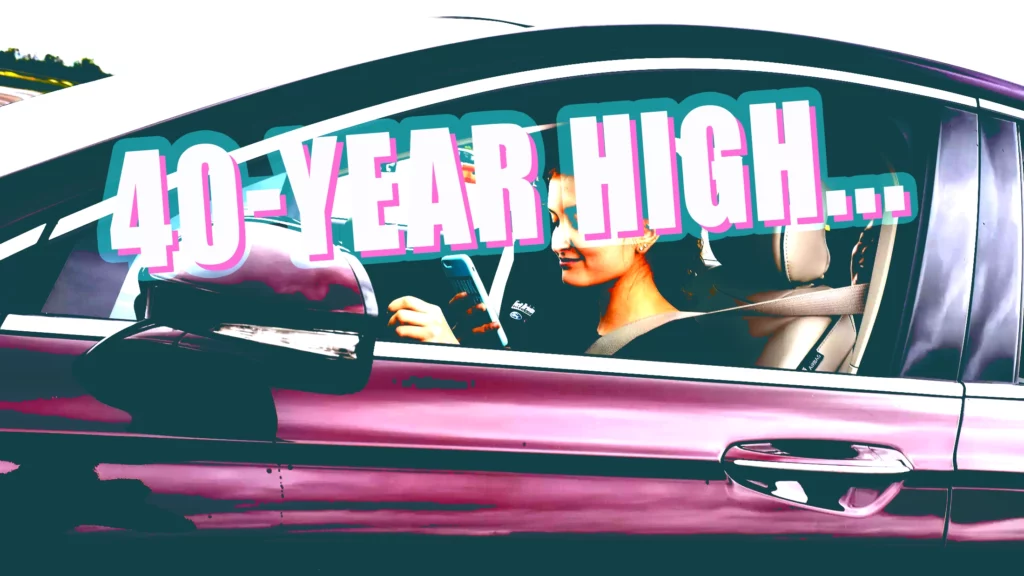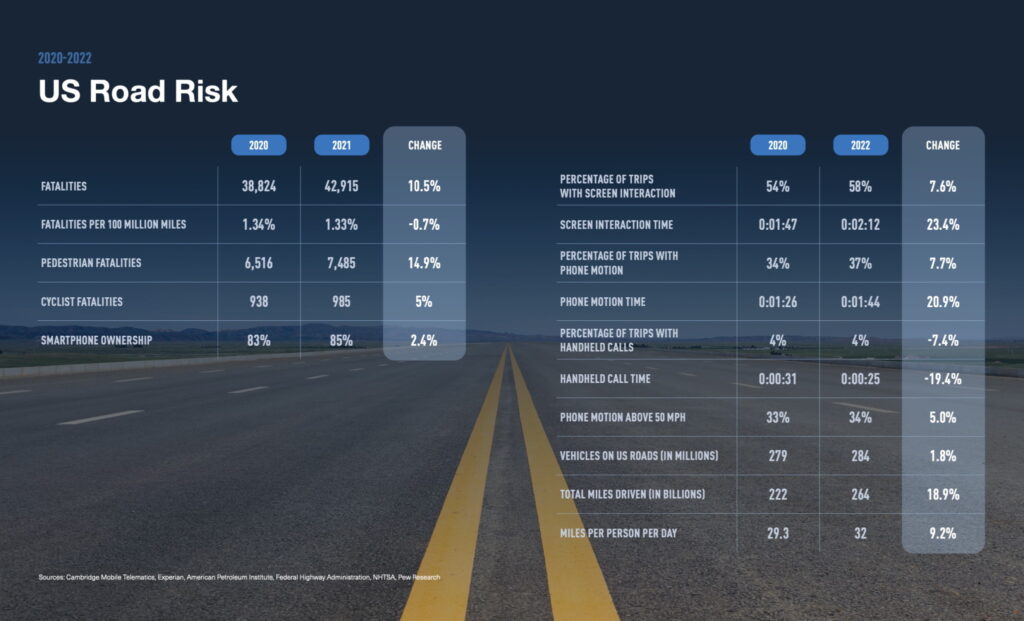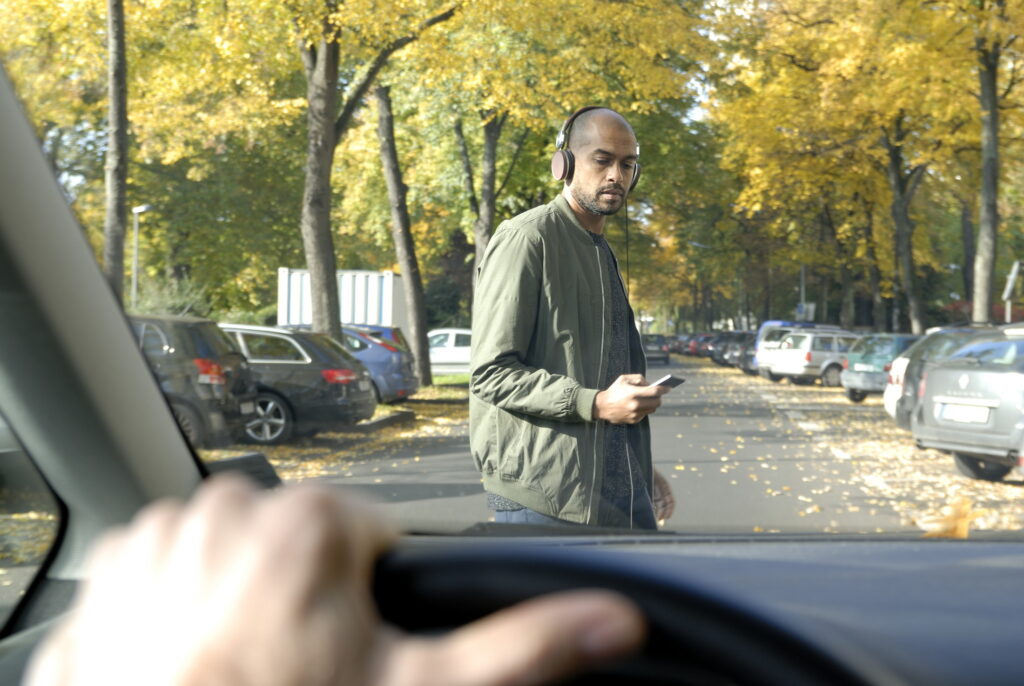Studies show that the most distracted drivers are 240 percent more likely to crash than the safest drivers in America
3 hours ago
 –>
–> 
–>
The instances of cell phone use behind the wheel grew alarmingly during the pandemic and contributed to growing rates of on-road deaths in America. New data from Cambridge Mobile Telematics (CMT), which develops driver tracking apps for insurers, sheds light onto just how alarming the trend has become.
“By almost every metric CMT measures, distracted driving is more present than ever on US roadways,” the company wrote in a recent report. “Drivers are spending more time using their phones while driving and doing it on more trips. Drivers interacted with their phones on nearly 58 percent of trips in 2022.”
During roughly a third of the trips in which drivers interacted with their phones, the vehicle was traveling at more than 50 mph (80 km/h). And Americans are more distracted than drivers in other countries. According to CMT’s data, people in the UK spent an average of 44 seconds per hour on their phone while driving, whereas drivers in the U.S. spent an average of 131 seconds, or 2 minutes and 11 seconds.
advertisement scroll to continue

“The way individuals are driving their vehicles in the US is distinct from the way they’re driving in Europe,” Ryan McMahon, senior VP of strategy for CMT, told Vox. And the pandemic seems to have made the problem worse. “We saw this incredible increase in distracted driving. You could almost track it by the day schools started to shut down.”
The reasons for that are many. For one thing, Americans simply need to drive more than Europeans. The size of the country, the design of its cities, and the lack of public transit relative to European countries mean that people in the U.S. have few alternatives to their cars. In addition, the nation’s attitude towards work and the dull design of its roads might mean that drivers are more tempted to pick up their phones.
Whatever the reasons for picking up their phone while driving, the consequences are dire. CMT reports that the most distracted drivers are 240 percent more likely to crash than the safest drivers. It also found that, in more than a third of the accidents it looked at, a driver had checked their phone a minute before the collision.
Indeed, rates of distracted driving are increasing as fatalities on American roads are at their highest levels in 40 years. Moreover, data shows that pedestrian deaths have steadily increased since the first iPhone was introduced in 2007.
Some suggest that insurance apps, like the ones CMT produces, could help save lives, while others argue that more laws should be introduced to curb smartphone usage. However, according to McMahon, tech companies should be the ones to limit drivers’ access to their phones while driving. He believes that would be the simplest and most effective solution, and that it would be worth the inconvenience given how many lives hang in the balance.
“Somehow, we’re just accepting 42-45,000 people in the US dying in this manner every year,” McMahon said. “It’s preventable.”

